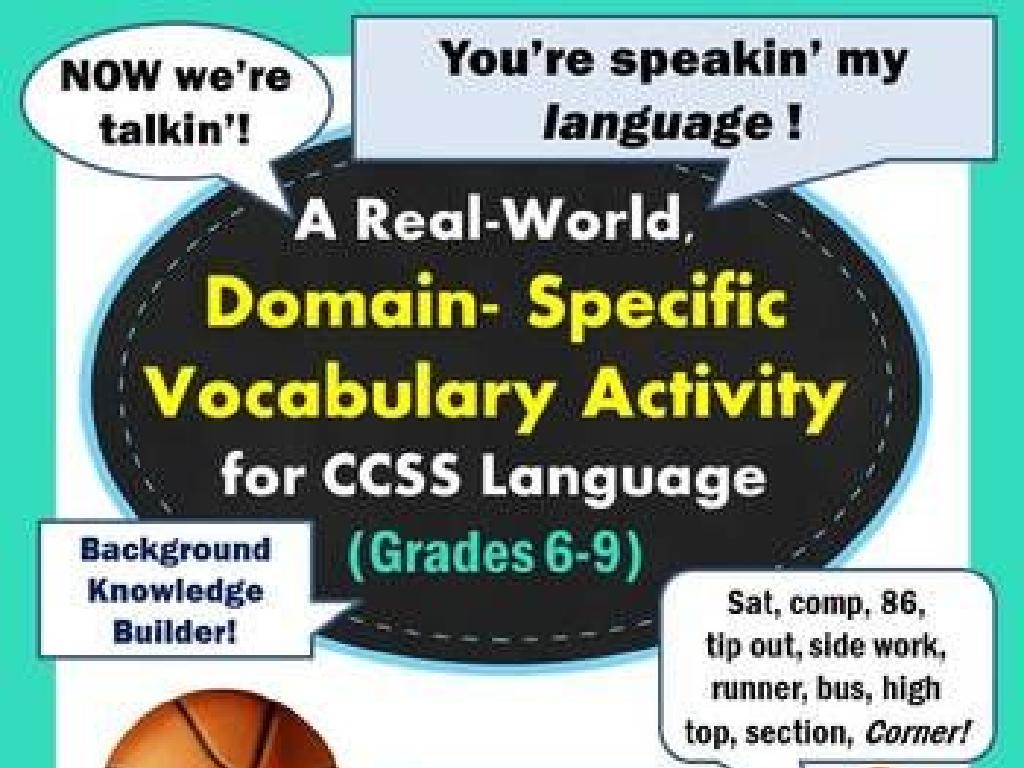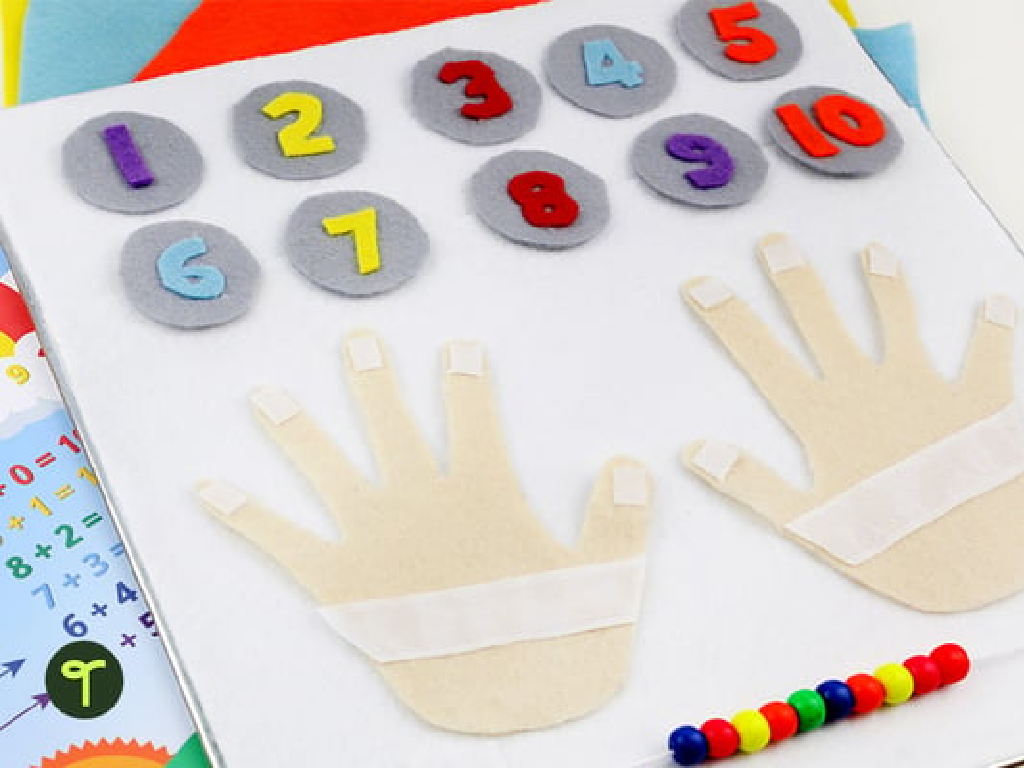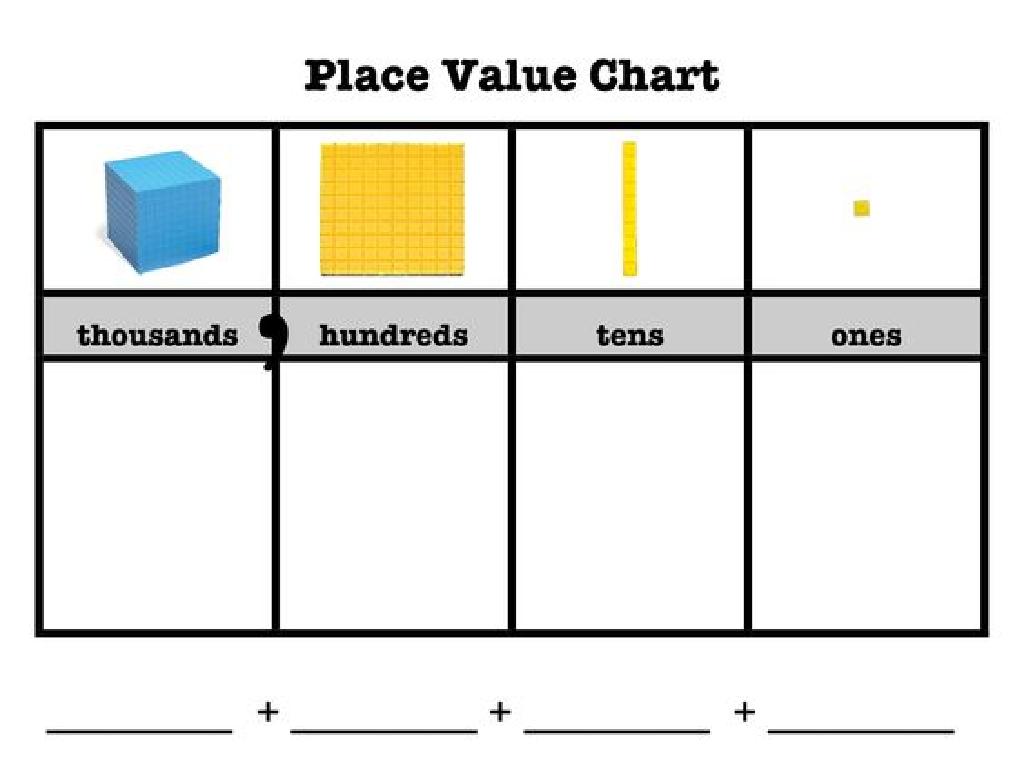Is It A Complete Sentence Or A Fragment?
Subject: Language arts
Grade: Third grade
Topic: Sentences, Fragments, And Run-Ons
Please LOG IN to download the presentation. Access is available to registered users only.
View More Content
Sentences vs. Fragments: Building Blocks of Writing
– What is a complete sentence?
– A complete sentence has a subject, verb, and expresses a complete thought.
– What is a fragment?
– A fragment is missing one of these elements and doesn’t express a full idea.
– How to spot the difference
– Look for subjects and verbs, and check if the thought feels finished.
– Why it matters in writing
– Understanding this helps us communicate clearly and effectively.
|
In today’s lesson, we’ll explore the difference between complete sentences and fragments. A complete sentence is the basic building block of writing and must have a subject (who or what the sentence is about), a verb (what the subject is doing), and express a complete thought. A fragment, on the other hand, is missing one or more of these elements and leaves the reader with an incomplete idea. We’ll practice identifying these in examples, and discuss why using complete sentences is crucial for clear communication. By the end of the lesson, students should be able to confidently distinguish between the two and understand the importance of complete sentences in their writing.
Understanding Sentences
– A sentence has a subject and a predicate
– Subject does the action, predicate tells about the action
– It must express a complete thought
– Like telling a tiny story with a beginning and end
– Example: ‘The cat sleeps on the mat.’
– ‘The cat’ is the subject, ‘sleeps on the mat’ is the predicate
|
This slide introduces the concept of a complete sentence to third-grade students. Emphasize that every sentence needs a subject, which is who or what the sentence is about, and a predicate, which tells us what the subject is doing. Explain that a sentence should also express a complete thought, giving enough information to understand what is being communicated. Use the example ‘The cat sleeps on the mat.’ to illustrate a simple sentence with a clear subject and predicate. Encourage students to think of their own examples and to identify the subject and predicate in each.
Understanding Sentence Fragments
– What’s a sentence fragment?
– A fragment is a piece of a sentence, but not a whole sentence.
– Fragments lack key elements
– They may miss a subject (who?) or a predicate (does what?).
– Fragments don’t express full thoughts
– It leaves us hanging, wanting more information.
– Example: ‘On the mat.’
– What is on the mat? We need more info!
|
This slide introduces the concept of sentence fragments to help students identify incomplete sentences. Explain that a fragment is like a puzzle piece that doesn’t stand alone; it needs other pieces to complete the picture. Emphasize that a complete sentence needs a subject and a predicate and must express a complete thought. Use the example ‘On the mat.’ to show how a fragment can create confusion because it doesn’t tell us enough. Ask students to think of what could be on the mat and how they would complete the sentence. This will prepare them for identifying and correcting fragments in their writing.
Let’s Practice: Sentences vs. Fragments
– What’s a complete sentence?
– What’s a fragment?
– Example 1: ‘She runs.’
– ‘She runs.’ has a subject and a verb, making it complete.
– Example 2: ‘Runs fast.’
– ‘Runs fast.’ is missing a subject, so it’s a fragment.
|
This slide is aimed at helping students practice identifying complete sentences versus fragments. A complete sentence must have at least a subject and a verb and express a complete thought. In contrast, a fragment is missing one of these elements and does not form a complete thought. Use Example 1 to show a simple sentence that is complete, and Example 2 to demonstrate a common mistake where the subject is missing, resulting in a fragment. Encourage students to explain why each example is a complete sentence or a fragment. You can extend the activity by asking students to correct the fragment or create their own examples of sentences and fragments.
Creating Complete Sentences
– Turning fragments into sentences
– A fragment is missing a subject, a predicate, or both.
– Add missing parts: subject/predicate
– Find what’s missing: Who is doing? What are they doing?
– Example: ‘In the morning.’
– ‘In the morning.’ is a fragment with no subject or action.
– Becomes: ‘She jogs in the morning.’
– We added ‘She jogs’ to make a complete thought.
|
This slide is aimed at helping students understand the difference between a sentence fragment and a complete sentence. A fragment is an incomplete thought that is missing a subject (who or what the sentence is about) or a predicate (what the subject is doing). Teach students to identify these missing parts and how to add them to create a complete sentence. Use the example ‘In the morning.’ to show how adding a subject (‘She’) and a verb (‘jogs’) turns a fragment into a complete sentence. Encourage students to practice with additional examples and to check their sentences by asking who is doing what.
Run-on Sentences: Spotting the Spill
– What’s a run-on sentence?
– It’s like a train with too many cars attached!
– Too many ideas, not enough punctuation
– Imagine trying to say a lot without taking a breath.
– Example: A sentence that’s too long
– ‘I love to write it is fun I write every day’ is a run-on.
– How to fix run-ons
– Use periods or conjunctions to break up thoughts.
|
This slide introduces the concept of run-on sentences to third graders. Explain that a run-on sentence is like a train with too many cars, or trying to say a lot without taking a breath. It’s important to use punctuation like periods, commas, and conjunctions to give the reader a break and to separate ideas. Use the example provided to show how the sentence can be broken up into smaller, complete sentences: ‘I love to write. It is fun. I write every day.’ Discuss with the class how each of these smaller sentences makes more sense on its own. Encourage students to look for run-on sentences in their writing and practice fixing them.
Fixing Run-on Sentences
– Use periods to finish thoughts
– Commas and conjunctions join ideas
– Like ‘and’, ‘but’ to connect sentences
– Example: I love to write. It is fun.
– ‘I write every day’ is another idea
– Practice: Write sentences daily
|
This slide aims to teach students how to correct run-on sentences by using proper punctuation. Start by explaining that each complete thought needs a period to show it is finished. Then, introduce conjunctions like ‘and’, ‘but’, and ‘or’, which can be used with commas to join related ideas. Use the example to show how two related sentences can be separated by a period to avoid a run-on. Encourage daily writing practice to help students get comfortable with identifying complete sentences and using periods and conjunctions correctly.
Class Activity: Sentence Scavenger Hunt
– Find sentences and fragments in class
– Pair up to fix sentence fragments
– Use fragments found to make full sentences with a subject and a verb
– Share your complete sentences
– Discuss with classmates what makes a sentence complete
– Learn to identify sentence parts
|
This interactive activity is designed to help students understand the difference between complete sentences and fragments. Have students search the classroom for examples of both, which can be on posters, books, or any written material available. Then, in pairs, they should work together to turn the fragments they find into complete sentences by adding the necessary components, such as subjects and verbs. Afterward, each pair will share their sentences with the class, providing an opportunity for discussion about what elements make a sentence complete. This will reinforce their understanding of sentence structure. For the teacher: Prepare a list of potential fragments and sentences in the classroom in advance, and have a few examples ready to demonstrate the activity.
Wrapping Up: Sentences vs. Fragments
– Recap sentence vs. fragment
A sentence has a subject, verb, and expresses a complete thought, unlike a fragment.
– Homework: Craft 5 sentences
Use your imagination to write 5 sentences about anything you like!
– Homework: Fix 5 fragments
Take 5 sentence fragments and make them into complete sentences.
– Share your sentences in class
Be ready to read your sentences to the class!
|
As we conclude today’s lesson, ensure that students can differentiate between complete sentences and fragments. A complete sentence must have a subject and a verb and must also express a complete thought. For homework, students will write five original complete sentences on any topic they choose, which encourages creativity and application of the lesson. Additionally, they will correct five fragments by turning them into complete sentences, reinforcing their understanding of sentence structure. In the next class, students will have the opportunity to share their sentences, allowing them to practice speaking skills and receive feedback on their work.






